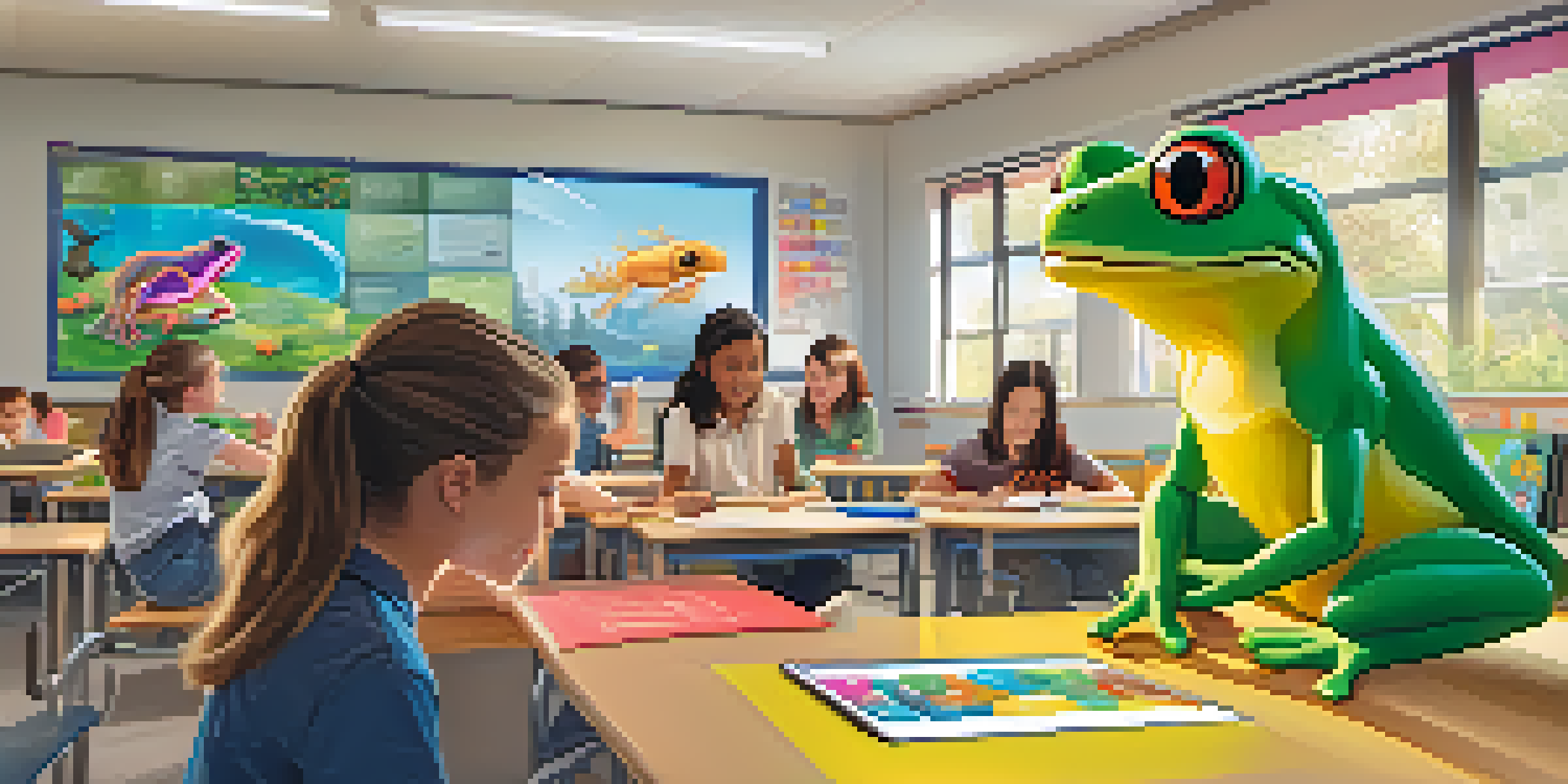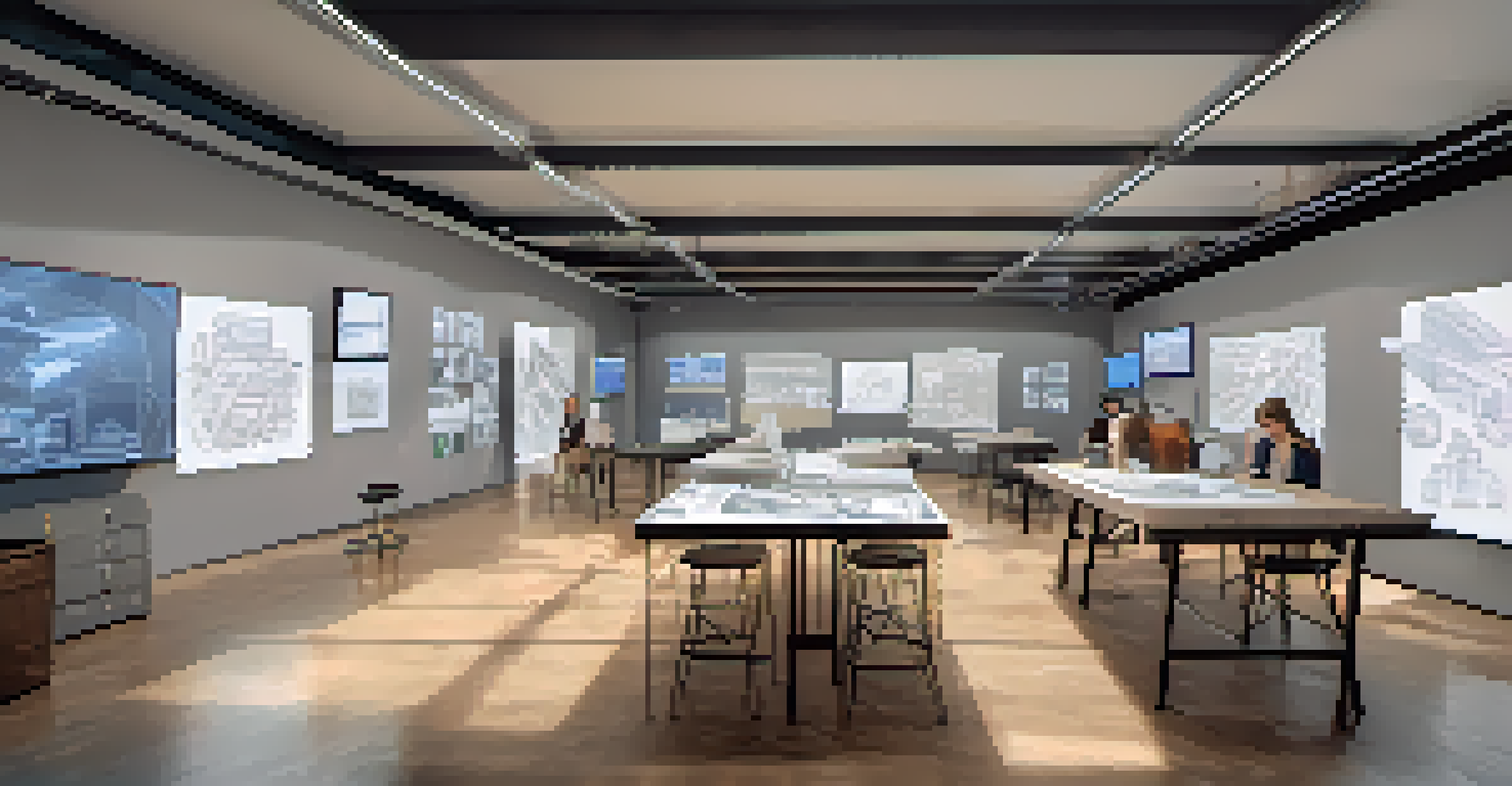Creating Immersive Learning Environments with AR

Understanding Immersive Learning and AR Technology
Immersive learning refers to engaging students in a way that allows them to experience the subject matter in a more profound manner. Augmented Reality (AR) plays a crucial role in this by overlaying digital information onto the real world, making learning interactive and engaging. Imagine a biology class where students can visually dissect a virtual frog right on their desks—this is the magic of AR.
Augmented reality is the bridge between the digital and physical worlds, enhancing the way we interact with information and each other.
The technology merges physical and digital elements, creating a learning experience that feels real and personal. This blend not only captures attention but also caters to various learning styles, whether visual, auditory, or kinesthetic. As a result, students can grasp complex concepts more easily, making the learning process both enjoyable and effective.
By utilizing AR tools, educators can create scenarios that simulate real-life challenges. For instance, medical students can practice surgeries in a risk-free environment using AR simulations, allowing for hands-on experience without the stakes of real-life procedures. This approach fosters a deeper understanding and retention of knowledge.
Key Benefits of AR in Learning Environments
One of the standout benefits of AR in education is its ability to enhance engagement. Traditional learning methods can often lead to disengagement, but AR transforms lessons into interactive experiences. When students can visualize and manipulate 3D models, they are more likely to stay focused and invested in their learning journey.

Moreover, AR encourages collaboration among students. In group projects, learners can work together in real-time, sharing the same augmented experience. This collaborative aspect not only fosters teamwork but also prepares students for future careers where collaboration is key.
AR Enhances Student Engagement
Augmented Reality transforms traditional lessons into interactive experiences, keeping students focused and invested in their learning.
Additionally, AR supports personalized learning. Each student can interact with the content at their own pace, revisiting complex topics as needed. This tailored approach ensures that no student is left behind, catering to individual learning speeds and styles.
Implementing AR in the Classroom: Tools and Platforms
To successfully integrate AR into learning environments, educators must choose the right tools and platforms. Various AR applications, like Google Expeditions and Quiver, allow teachers to create immersive lessons without extensive technical knowledge. These tools provide a user-friendly interface, enabling educators to focus more on teaching and less on troubleshooting.
The future of education is not about technology itself, but about how technology can enhance the learning experience.
Another option is to develop custom AR content tailored to specific curriculums. While this may require more resources, the payoff can be significant as it aligns perfectly with learning objectives. Engaging developers or using platforms like Unity can help create bespoke experiences that resonate with students.
It's also essential for teachers to receive adequate training on how to utilize these tools effectively. Professional development workshops can equip educators with the skills necessary to implement AR seamlessly into their teaching strategies. This investment in training enhances the overall impact of AR in the classroom.
Challenges and Considerations in AR Implementation
While AR holds great promise for education, several challenges can arise during its implementation. One major hurdle is the cost associated with AR technology, including devices and software. Schools with limited budgets may struggle to acquire the necessary resources, which can hinder the widespread adoption of AR.
Moreover, teachers may face a learning curve when integrating AR into their lesson plans. Without proper training or support, they might feel overwhelmed by the technology. It’s crucial for educational institutions to provide ongoing support to ensure that teachers feel confident and equipped to use AR effectively.
Personalized Learning with AR
AR supports personalized learning by allowing students to interact with content at their own pace, ensuring no one is left behind.
Lastly, there is the consideration of accessibility. Not all students may have access to the devices needed for AR experiences. Ensuring that all learners can benefit from AR technologies requires thoughtful planning and consideration to avoid widening the digital divide.
Real-World Examples of AR in Education
Several educational institutions are successfully using AR to enhance their curricula. For instance, the University of Illinois has implemented AR in its architecture program, allowing students to visualize their designs in real-world contexts. This hands-on experience is invaluable for budding architects as it bridges the gap between theory and practice.
Another example is the use of AR in museums and historical sites. The Smithsonian National Museum of Natural History offers an AR app that enriches the visitor experience by providing interactive information about exhibits. This not only enhances learning but also makes the visit more engaging and memorable.
These real-world applications of AR serve as powerful testimonials to its effectiveness in education. They illustrate how integrating technology can elevate traditional learning experiences, making them more dynamic and relevant to today's students.
The Future of AR in Educational Settings
As technology continues to evolve, the future of AR in education looks promising. Innovations in AR will likely lead to even more immersive experiences, allowing students to explore complex subjects in ways we can only imagine today. Virtual classrooms could become commonplace, breaking geographical barriers and providing access to quality education worldwide.
Moreover, advancements in AI could enhance AR by personalizing learning experiences even further. AI algorithms might analyze student interactions with AR content, adjusting difficulty levels and suggesting resources based on individual performance. This creates a truly customized learning journey for each student.
Challenges in AR Implementation
Despite its benefits, implementing AR in classrooms can be hindered by costs, teacher training needs, and accessibility issues.
As educators and technologists work together to harness the full potential of AR, we can expect a shift in how learning is delivered. The traditional classroom model may evolve into a more interactive and engaging environment, fostering a new generation of learners who are better prepared for the challenges of the future.
Conclusion: Embracing AR for Enhanced Learning Experiences
In conclusion, augmented reality has the potential to revolutionize the way we approach education. By creating immersive learning environments, AR makes education more engaging, personalized, and effective. It encourages collaboration, enhances retention, and prepares students for real-world applications of their knowledge.
As educators begin to embrace this technology, it’s essential to remember that successful implementation requires careful planning, adequate resources, and ongoing support. By addressing potential challenges and investing in training, schools can unlock the full benefits of AR in the classroom.

Ultimately, the goal is to create a learning experience that inspires curiosity and fosters a love for knowledge. With AR, we are on the cusp of a transformative shift in educational practices, paving the way for future generations to thrive in an increasingly digital world.